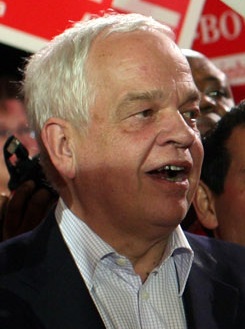This week, the Liberal Government of Canada released their 2016 immigration plan, which was delayed by last fall’s federal election. The plan aims to admit “a record number of immigrants,” according to the CBC, as the government’s immigration focus shifts to family reunification and welcoming refugees.

“This plan sends a message about the importance of family,” said Immigration, Refugees and Citizenship Minister John McCallum. “It outlines a significant shift in immigration policy towards reuniting more families, building our economy and upholding Canada’s humanitarian traditions to resettle refugees and offer protection to those in need.”
Officially, the plan seeks to admit between 280,000 and 305,000 permanent residents in 2016, an increase of about 21,000 from the Conservative Party’s 2015 plan. According to the CBC, Canada will admit between 151,200 and 162,400 “caregivers, provincial nominees, and other skilled workers under the economic stream; 75,000 to 82,000 spouses, partners, children, parents and grandparents of Canadians under the family reunification plan; and 51,000 to 57,000 refugees, protected persons and others admitted for humanitarian reasons.”
Ottawa has also “tripled the number of privately sponsored refugees to 18,000,” according to the Toronto Star, and is expected to admit 10,000 new Syrian refugees by the end of the year. Approximately 55,800 refugees are expected to be admitted to Canada in 2016, the Star reports.
The NDP and Conservative Party had strong words for the new immigration plan. Conservative critic Michelle Rempel was disappointed by plans to cut the number of economic immigrants, saying: “These cuts to economic immigration come at a time when our workforce is aging, our economy is slowing, and refugees are waiting for months to have long-term affordable housing.”
While it’s true that the number of economic immigrants will fall compared to last year, between 2005 and 2014 an average of 154,544 economic immigrants spots were available annually. The 2016 plan does not significantly vary from this trend, and economic immigrants “will still account for the majority of admissions,” according to the Star.
Jenny Kwan, the NDP’s immigration critic, was “disappointed” to see the number of sponsorships for parents and grandparents remain at the same number as last year’s plan.
“With the doubling of applications and the same level as the Conservatives, we can expect the wait times to get even worse,” Kwan said in a statement.
Despite the NDP’s critique, McCallum is confident the new plan will make the process of family reunification easier for immigrants. The government plans to restore the maximum eligible age for dependants to 22 from 19, and will “re-examine the two-year conditional permanent residence provision for sponsored spouses.”
The Conservative Party’s Express Entry policy, which was launched in 2015 to attract “the best and brightest” highly-skilled workers, will also come under review, with potential reforms aimed at facilitating the permanent residency process for international students.
While the numbers presented in the Liberal Party’s 2016 Immigration Plan do not vary significantly from previous editions, the focus on family reunification and refugee resettlement is very much in tune with the new government’s efforts to reinvigorate Canada’s humanitarian reputation. Whether the government is able to meet their goals remains to be seen.





